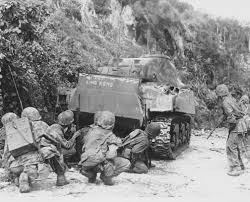Discovering Saipan: A Jewel of the Northern Mariana Islands

Introduction
Saipan, the largest island in the Northern Mariana Islands, serves as the capital and a melting pot of culture and history. Its strategic location in the western Pacific Ocean makes it significant not only for its natural beauty but also for its historical relevance in post-World War II events. With a unique blend of American and Chamorro influences, Saipan has become a popular destination for tourists, particularly from Asia, contributing to its growing economy.
Historical Significance
Saipan is steeped in history, particularly marked by its role during World War II. The island was the site of a pivotal battle in 1944, which ultimately led to the United States gaining control of the Mariana Islands. Today, remnants of this past, including war memorials and historic sites, attract many visitors. The island’s history is not just about conflict; it is also a testament to the resilience of its indigenous Sandnati people and their rich heritage.
Tourism and Economy
Tourism plays a central role in Saipan’s economy. The island boasts stunning beaches, such as Micro Beach and Obyan Beach, offering crystal-clear waters that are perfect for swimming, diving, and snorkeling. Additionally, outdoor adventures like hiking, golf, and exploring unique geological formations like the Grotto, an underwater cavern popular with divers, draw outdoor enthusiasts year-round. The Northern Mariana Islands have seen steady investment in hospitality and amenities, making it a prominent vacation spot for travellers looking for tropical experiences.
Current Events
Recently, local government initiatives have focused on sustainable tourism that respects the environment and local culture. These efforts aim to attract a more diverse visitor demographic while preserving Saipan’s natural beauty. The COVID-19 pandemic has challenged many tourism-dependent regions, and Saipan is working to recover by promoting safe travel protocols. As travel restrictions ease, local officials are optimistic about a resurgence in tourism by highlighting unique cultural festivals, such as the Flame Tree Arts Festival, which showcases local art, music, and cuisine.
Conclusion
Saipan stands as a testament to the beauty and complexity of the Northern Mariana Islands. Its rich history, diverse culture, and stunning landscapes make it an essential part of the Pacific region. As the island advances towards a sustainable tourism model, it promises to attract even more visitors interested in both leisure and historical exploration. For travellers, Saipan offers an unforgettable experience filled with adventure, relaxation, and cultural encounters.








